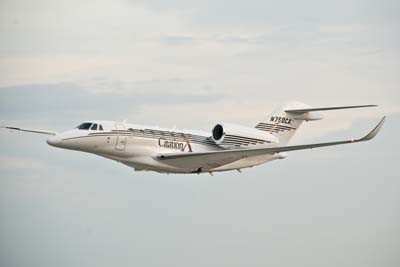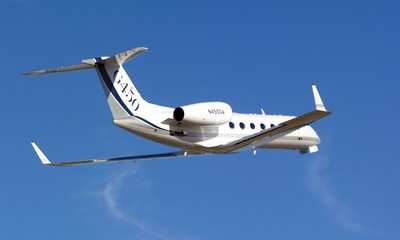Prices About Half Of 2008 Highs
One market analyst's research indicates that the factors driving
the current aviation marketplace as a true “buyer’s
market” are a combination of general economic conditions that
include a historically high used inventory level, prices that are
50% below the 2008 highs and still relatively low corporate demand,
according to UBS and JP Morgan industry reports.

As the global economy stabilizes and corporate earnings improve
along with rising demand from newly-minted wealth in the most
rapidly growing global economies of Brazil, Russia, India and China
(the BRIC countries), Daniel Jennings, founder of The Private Jet
Company, sees private aircraft prices first hold, and then begin to
increase, with demand decreasing the used market supply.
Jennings feels that market indicators currently in place and
giving a clear signal for a general market bottom and thus creating
a “buyer’s market.” Prices of private jets have
fallen over 50% from 2008 highs, due to the oversupply of aircraft
on the market being offered for sale by companies and institutions
affected by recession and lack of demand. In 2008 Gulfstream
GV’s that traded at $45 million and today can be purchased in
the mid to low $20 million range according to JETNET data.
And prices are continuing to fall, but at a slower rate. This is
what market-watchers call the “second derivative” of
price movement, and as it turns positive, it indicates that prices
will soon bottom and begin to turn up.

Inventories are increasing as seen by JETNET and Amstat data
tracking, but at a slower rate than in the recent past indicating
that soon inventories will reach a top, and begin to decrease.
Smart investors know that the best time to buy is when prices are
still falling and inventories are still rising, as most buyers will
wait and sit on the sidelines and enter the market only when it is
clear the market has turned. As a result, these smart investors
will face less competition for assets and will have maximum
leverage with sellers.
Interest rates are at historical lows, but are beginning to
slowly rise. Today a borrower with excellent credit rating can
obtain an aircraft loan at Libor + 200 bps, or approximately 2.30%.
However, interest rates are rising, as can be seen in the recent
movement of 10 year US Treasury Bond rates. 10 year US Treasuries
have moved from 2.38% in October to 3.39% in December, a move of
100 bps in less than two months. Smart investors will look to
purchase aircraft now while they can still lock in historically low
interest rates.
Corporate Buyers will most likely be re-entering the marketplace
as their earnings continue to improve. JP Morgan estimates that
demand for private aircraft lags the cycle of corporate earnings by
about two years. Corporate Earnings have rebounded from their lows
in 2008 and are near pre market-crash levels. Historical
relationships imply that corporate buyers will begin to re-enter
the market as buyers of private jets over the next 12-18 months.
Smart investors and corporate buyers will move before a larger
number or corporate buyers re-enter the market and changes the
current favorable supply-demand relationship from a
“buyer’s market” to a “sellers market."

BRIC countries are minting new millionaires and billionaires at
an ever-increasing pace. This trend is having significant impact on
the private jet market, as it is generating a pool of private jet
buyers that is growing faster than the available supply. This trend
is only going to accelerate over the next decade as emerging market
economies generate a larger and larger portion of global economic
output. The smart investor will take advantage of the current
market conditions to purchase a private aircraft before the growing
pool of newly wealthy individual buyers realize the value and
prestige of private aircraft ownership and increase demand relative
to the limited supply.
 Airbus Racer Helicopter Demonstrator First Flight Part of Clean Sky 2 Initiative
Airbus Racer Helicopter Demonstrator First Flight Part of Clean Sky 2 Initiative Diamond's Electric DA40 Finds Fans at Dübendorf
Diamond's Electric DA40 Finds Fans at Dübendorf ANN's Daily Aero-Term (04.23.24): Line Up And Wait (LUAW)
ANN's Daily Aero-Term (04.23.24): Line Up And Wait (LUAW) NTSB Final Report: Extra Flugzeugbau GMBH EA300/L
NTSB Final Report: Extra Flugzeugbau GMBH EA300/L Classic Aero-TV: 'Never Give Up' - Advice From Two of FedEx's Female Captains
Classic Aero-TV: 'Never Give Up' - Advice From Two of FedEx's Female Captains





